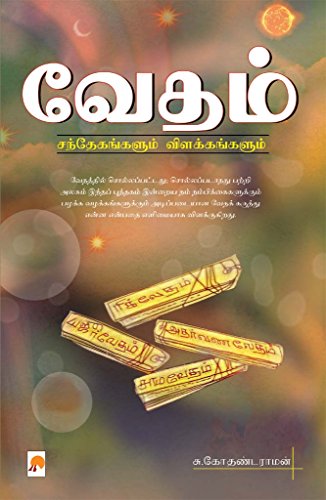Holy Scriptures
The Holy Vedas were the first sacred books that God Kabir gave for his beloved souls. The Vedas are the oldest religious texts written in Vedic Sanskrit. It is a common belief that Vedas belong to Hindu religion but this is not correct. The knowledge of the holy Vedas was given at the time of the creation of the universe. There was no religion then. So the Vedas really belong to the entire mankind. The knowledge of the Holy Vedas belongs to the entire mankind. Vedas are the holy books of all religions in the world because they predate any religion.


The giver of Vedic knowledge
Hitherto it was believed by the sages that Brahma gave Vedic knowledge. But contrary to this fact, we are here to give you complete facts about who created the Vedas and why.
The Vedas were originally given to Kalabraham by Supreme God Kavir Dev when he was expelled from Satlok along with his 21 universes. At that time, God Kavir Dev gave Kal the knowledge of 5 Vedas (instead of 4), which appeared through Kal’s breath, as ordained by Kavir.
It’s a little harder to understand, but the closest analogy is a fax machine. It is like faxing a document from one country to another without visible communication between the fax machines. Likewise Kavirdev faxed the 5 Vedas that came out while exhaling to Cal Brahma.
Cal Brahma read all the published books. These texts contain authentic worship mantras to attain the glory and salvation of the Absolute God, God Kavir Dev or Kabir Saheb. So Kabir hid the scriptures containing the highest glory of God and gave the rest to the world.
நான்கு புனித வேதங்களின் சுருக்கமான அறிமுகம்
புனித ரிக்வேதம்.
- The sacred Rigveda is a collection of 1,028 hymns (suktas) in about 10,600 verses, organized into ten books (mandals).
- The greatness of Lord Kabir Dev is described in detail in the holy Rigveda. According to the Rigveda where the supreme God resides, the creation of nature and how God increases the life of his devotee is explained in detail in this section.
- Yajur Veda means “knowledge of worship”.
The holy Yajurveda Samhita has about 1,875 verses. Yajur Veda contains the knowledge of how God Kabir Dev is and whether he forgives the sins of his devotees or not.
- Yajur Veda means “knowledge of worship”.
The holy Yajurveda Samhita has about 1,875 verses. Yajur Veda contains the knowledge of how God Kabir Dev is and whether he forgives the sins of his devotees or not.
- The Atharvaveda is composed in Vedic Sanskrit and is a collection of 730 hymns containing about 6,000 mantras divided into 20 books called Anuvaks.
பகவத் கீதை
Bhagavad Gita is the most widely read and respected religious text in the world. The state of Aryana is proud of the fact that this mythological epic was blessed by Lord Krishna at Jyotisar (Kurukshetra) located here.
Also, it was compiled by Veda Vyasa on the banks of Saraswati which was once the perennial river of this state. Therefore, the greatest philosophy of life is associated with Haryana, as Lord Krishna gave the supreme instruction to Arjuna in this land.
This poem is a long poem which actually describes an individual’s life, karma and duties. Lord Krishna explains to Arjuna how he should do his duty and become a part of the ultimate soul. This poem forms the sixteenth chapter (chapters) of the Mahabharata written by Veda Vyasa. It is in form. Sanskrit Hymns (Slokas). Let us briefly read what the Bhagavad Gita has to say about every human form in the world.
The Gita had little religious influence until Shankaracharya’s commentary appeared. It has had a major impact on Hinduism ever since. Krishna, who appears in the poem as Vishnu in the flesh, is the spiritual teacher who recited the Gita. A large part of the Bhagavad Gita consists of a dialogue between Krishna and Arjuna on the battlefield at Kurushetram.

It is there that the royal cousins Pandavas and Kauravas face each other in a decisive battle to end their feud. The Bhagavad Gita discusses the right and wrong of conflict. It also discusses the duty a person owes to himself, or herself, to fellow man and to God.
It explores God’s relationship with humans. How people begin to understand God and thus, free themselves from the burden of karma (actions done in previous lives and in this present).
Krishna and Arjuna are not the only speakers of the Bhagavad Gita. King Dhritarashtra, the father of the Kauravas, asks the charioteer Sanjaya to describe the course of the war for him. The rest of The Bhagavad Gita deals with the statement of Sanjay, who describes what he sees in trance.
Prince Arjuna is very disturbed to see his cousins and brothers preparing for war. He asks Krishna, who acts as his charioteer, how he can justly take part in the war, since it must be wrong to kill his relatives for power. He would rather die than kill his relatives. Due to this predicament, he throws down his weapons and gives up the fight.
Advertisements:
Krishna thinks that Arjuna is only showing signs of weakness. But when he realizes that the prince is truly curious about where his duty lies. Vishnu speaks as God. He explains the nature of Atma (soul).
The soul cannot and cannot be killed. When the body dies, it simply passes into another body and continues to live. All the living must die, and all the dead must be reborn. Why lament the inevitable? It is Arjuna’s duty to fight the war for the right cause. He is a soldier and his duty is to fight. The real sin is not in killing his enemies but in failing in his dharma (duty).
Krishna advises Arjuna about the three ways to merge with God. The first is karma yoga (way of action). Every man should do his duty according to the caste, without personal gain or ambition, with faith in God. Those who perform rituals without care or interest or do their work only for profit are not free from the cycle of birth, death and rebirth.
Only when one acts with his mind fixed on Brahman (God) will he or she attain liberation. Also, he will be at peace and united with the Almighty. No one in that state feels confused desires. Where there is no desire there is no disappointment, and there are competing ambitions. At work, one’s only ambition is to set an example for others so that they too do their duty.
The second path is jnana yoga (path of knowledge). Through this method too, the meditator can seek union with God. Such a person has great self-control and spends a lot of time in meditation. By the grace of God he will realize that Brahman and soul are one.
Arjuna asks which of these two paths is better. Krishna replied that whatever path is followed the result is the same. The end means absorption is Brahman. The entire universe is due to Brahman but few are mature enough to realize his power. Most people are absorbed by their own petty and temporary concerns, which are maya (illusion); And maya cannot last but must pass away with time.
The third way is bhakti yoga (way of devotion). This is one of the most important contributions of the Bhagavad Gita to the development of modern Hinduism. Krishna becomes an Ishvara (personal god) who can be worshiped by his followers either as a spirit or as an image.
He will accept any offering made with love, however humble. Ever)’ the worshiper who approaches with a loving heart is welcomed. Union with God and freedom from the miseries of birth, death and rebirth are for all devotees of Krishna.
Krishna then reveals himself to Arjuna as Lord Vishnu, and Arjuna is overjoyed and bursts into a great hymn. He is afraid and ashamed because he calls Krishna his friend. But Krishna is merciful and returns to human form to comfort Arjuna. He explains to Arjuna that His majesty is too great for humans to see. Krishna continues to teach Arjuna about human nature.
He defines the qualities that bring men closer to Brahman and the qualities that lead them astray. People’s individual nature determines what and how they worship. Some look to God, others to worldly things. When people make offerings to God, it must be done in Taith; Otherwise it is unreal and cannot bring good results.
The Bhagavad Gita provides a summary of Hindu religious thought and practice; Most of it is based on the Upanishads. They are part of the Vedas, the oldest holy books of Hinduism. It provides a means to develop faith and create a personal relationship between the deity and his worshippers. It offers a new approach to fully realizing and absorbing Brahman.

